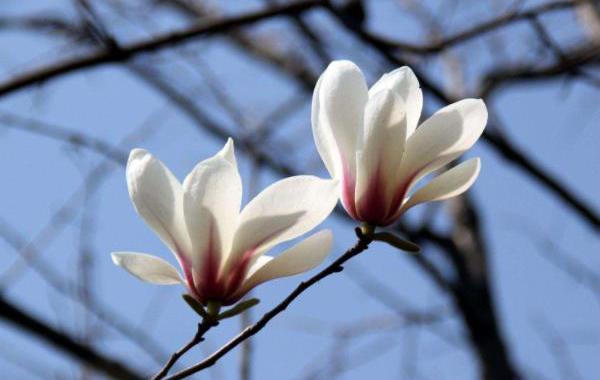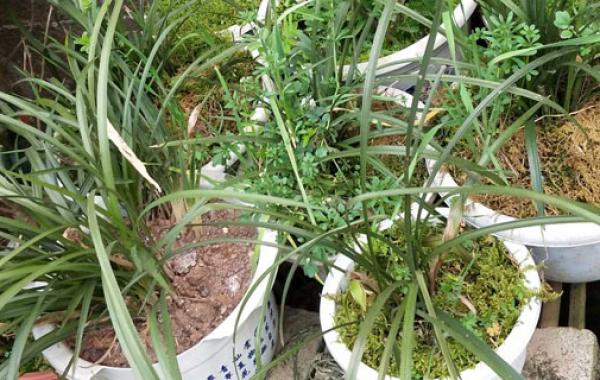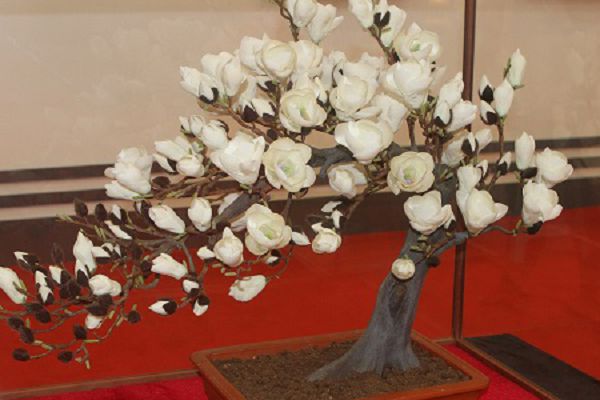How to raise Magnolia, methods and matters needing attention in Magnolia Culture

Magnolia is a small deciduous tree with purple-brown branches and fragrant wood. Originally grew in the mixed forest in central China, so like light, but also shade, like warm and humid, but also cold-resistant, lower requirements for the growth environment. So in the family planting, how to raise magnolia? What should we pay attention to?
How to raise magnolia
Magnolia like wet but afraid of waterlogging, like adequate sunshine, good ventilation, acidic soil, usually pour more ferrous sulfate and thin fertilizer.
1. Soil: Magnolia prefers fertile, moist and well-drained sandy soil, does not tolerate drought, taboos alkali, and grows poorly on dry, alkaline soil and clay.
2. Watering: Magnolia flowers avoid drought and waterlogging, usually to ensure the supply of water, often spray water to the leaves, increase the air dampness, so as to avoid yellow leaves.
3. Sunshine: magnolia likes light and is slightly shady, so we should pay attention to the problem of lighting so that magnolia can fully accept the sunlight.
Temperature: magnolia like warm and humid climate, can also be cold-resistant, but if the temperature is lower in winter, it is still necessary to move to indoor insulation and breeding.
5. Fertilization: Magnolia like fertilizer, it should be fertilized in time, fertilizing once before and after flowering, mainly phosphorus and potassium fertilizer, applying mature manure as base manure from October to November every year, and topdressing available nitrogen fertilizer for 2 or 3 times during sprouting and branching after anthesis.
6. Insect pests: the main pests of Magnolia are Haitong cotton scale, coal fouling disease and so on, which will reduce the ornamental value and can be sprayed with Popper 1-3 degree stone sulfur mixture. during nymph incubation, 40% omethoate EC 1000 times and 10% pyridine wettable powder 1500 times can be used. When adults occur, they are evenly sprayed with 800ml 1000 times liquid or 40% speed EC 1500 times. Adding appropriate amount of diesel oil during spraying can increase its permeability, and the liquid must be sprayed thoroughly.
7. Pruning: Magnolia must be removed from tillers, sprouting and pruning to facilitate the tree-shaped growth of magnolia.
Culture methods and matters needing attention of Magnolia
1. Magnolia soil requirements
1. Like sandy soil that is fertile, moist and well drained.
2. it is not resistant to drought, avoid alkali, and grow poorly on dry, alkaline soil and clay.
3, the root is fleshy, afraid of flooding, the wound is more and more poor, and transplanting is not easy to survive.
II. Cultivation and maintenance of Magnolia
1. Cultivation and management is simple, pay attention to drought and waterlogging prevention, timely fertilization.
2. The transplant can be carried out before flowering in autumn or early spring, the seedlings are stained with mud, and the big seedlings must carry soil balls.
3. Fertilization was applied once before and after flowering, mainly phosphorus and potassium fertilizer.
4. Maintain soil moisture in high temperature in summer and dry in autumn.
5. After flowering and before sprouting new branches, dry branches, dense branches and short long branches should be cut off.
III. Regulation and control of water and fertilizer in Mulan
1. Magnolia is resistant to drought and is afraid of flooding. It is necessary to ensure the supply of water at ordinary times, and often spray water to the leaves to increase air humidity to avoid yellow leaves and fallen leaves.
2. Mulan likes fertilizer. From October to November every year, mature barnyard manure is applied as base fertilizer. During sprouting and branching after anthesis, available nitrogen fertilizer is applied for 2 or 3 times, and the rhizosphere is covered and watered properly in dry season. Flowers and leaves are expected to flourish in the following year.
IV. Disease and pest control of magnolia
1. There are few diseases and insect pests in Magnolia. As long as you pay attention to water control, cut off diseased leaves in time, and maintain ventilation.
2. Properly increase the spraying of insecticides in severe cases.
How to prune magnolia
1. Continuous pruning should be carried out in orchid culture. When the old leaves are withered and yellow, they should be cut off in time to facilitate ventilation, and the withered tips of some leaves should also be cut off. In particular, the leaves damaged by diseases and insect pests need to be removed in time to avoid infection. When cutting off leaves with virus disease, do not use scissors to cut disease-free leaves to prevent the virus from spreading. If the same pair of scissors is used, it needs to be disinfected.
2. After magnolia flower buds are unearthed, if there are too many flower buds, strong buds should be left, and the rest of the thin flower buds should be removed, leaving 1-2 flower buds in each pot. If there are too many flower buds, it will not only make the flowers bloom badly, but also consume too much nutrients of the maternal parent to affect the flowering next year. In general, orchids do not cut off flower buds.
Propagation methods of Magnolia
I. seed propagation
1. Raising seedlings
Select the seeds of strong plants as the mother seed, mix the harvested mature seeds with coarse sand in the first and middle of September, rub them repeatedly to remove the red grease layer, rinse and dry them with clean water and dry them in fine wet sand for low temperature treatment, generally choose the leeward side, dig the pool and mix the fine sand covering grass with 2-3 times the amount of seeds to moisturize, often check and keep moist, sow eight seedling beds in time when the seed cracks are exposed, and open ditches according to the row spacing of 30 cm. Ditch depth of 3 cm, a little soil cover after sowing, keep moist for 1 month or so can emerge, sand storage period pay attention to prevent stagnant water and mildew.
2. Transplanting
After 2 years, the seedlings can be transplanted when the seedlings are 80-100 cm high, and the seedlings can be planted with them.
3. Grafting
It can be grafted throughout the growing season, but the survival rate of grafting is the highest in late May, and bud grafting is mostly used in producing areas. The scion should choose the branches with good development, strong growth, dormant buds and no diseases and insect pests, the annual scion is better, and the rootstock should be the same thickness as the scion. Choose sunny weather, no wind or breeze grafting in the afternoon, when grafting, insert the bud into the incision of the rootstock, make the bud stick to the cortex of the rootstock, fasten it with a rope, and the seedlings can emerge in half a month.
4. Cuttage seedling
Select more than two-year-old branches, cut into about 60 cm, remove leaves, in summer and autumn cloudy and rainy days, cut on the wet seedling bed, 20-30 cm into the soil, compacted and watered, you can survive and transplant the following year.
Magnolia is a good ornamental flower in early spring. Every year, when Magnolia blossoms in early spring, the purplish red flowers are covered with branches, the flowers are large and fresh. Magnolia is a woody plant, so it is not very suitable for family potted planting, preferably in the courtyard or garden.
Related
- Is the orchid suitable for indoor use? Is it good for the body?
- How to prevent the empty root of orchids?
- What to do after the crab claw orchid is withered?
- Why are the leaves of orchids always yellow? Fertilizing and watering.
- Can the root of the gentleman orchid be saved if it is rotten?
- Diagnosis and treatment of cotton-blowing beetle insects in Cymbidium
- There is a way for a gentleman's orchid to rot.
- What is the most suitable temperature and humidity for the orchid?
- How to raise a gentleman's orchid? Cultivation techniques of Cymbidium
- How to prepare the nutritive soil for the cultivation of Cymbidium



